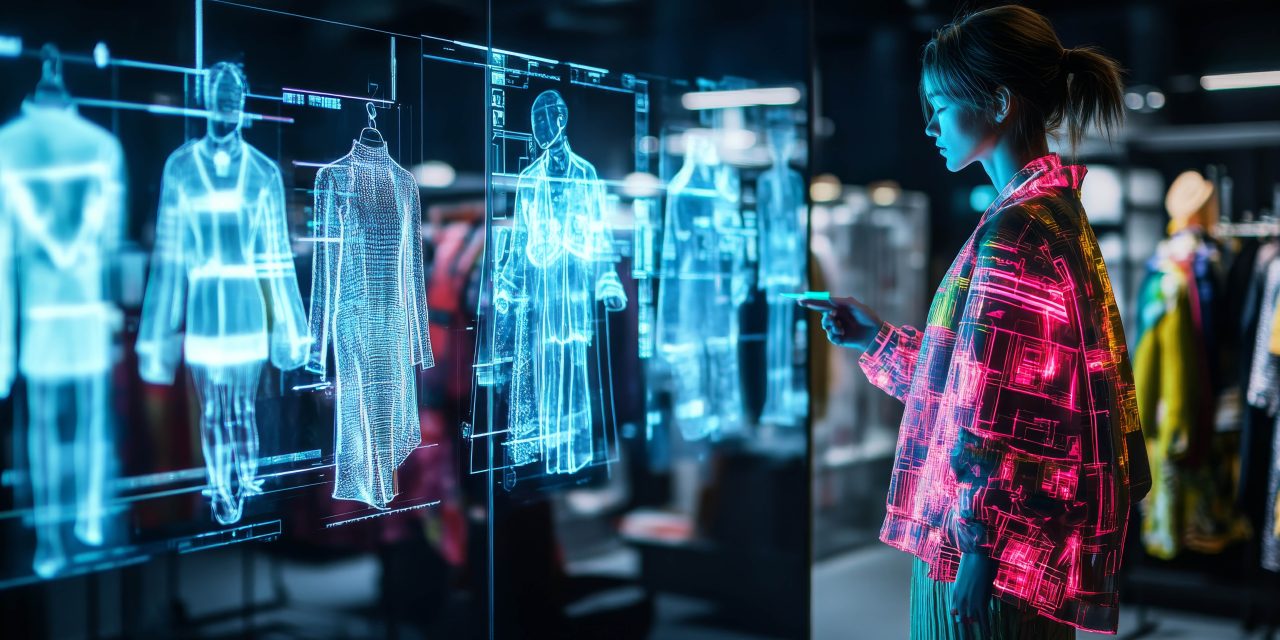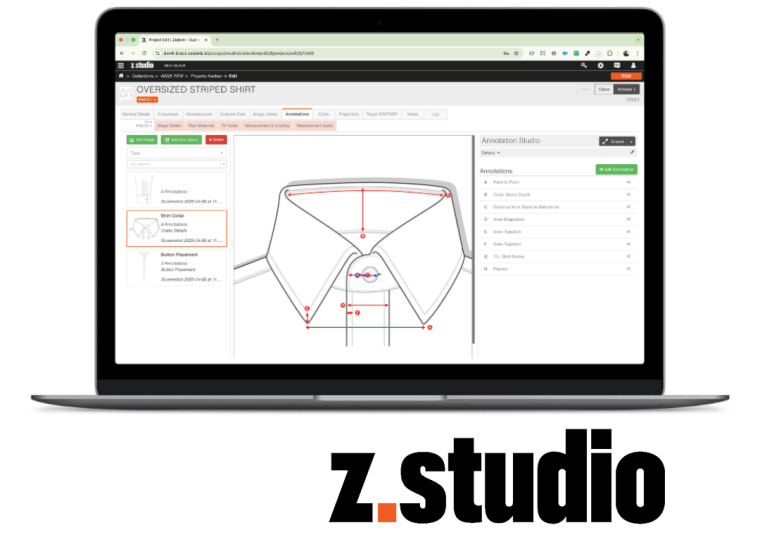AI is no longer a side project. Today, it sits inside the tools creative teams use every day, from image exploration to buyer presentations. The question is not whether to use it, but how to shape it so it serves your brand, your buyers and your way of working.
This guide looks at AI for fashion brands from a creative and wholesale point of view. We focus on practical wins in design support, digital showrooms and sales enablement, rather than supply chain algorithms. Along the way, you will see where a solid PLM foundation like Zedonk’s Z.Studio keeps data clean and shareable so you can focus on building your brand.

1) The new creative stack: where AI and PLM meet
Most teams already use prompts to collect references, vary silhouettes or test colour stories. That is generative AI in fashion at its simplest. The hard part is turning a good idea into a clear brief that your cutters and factories can follow. This is where PLM matters.
Z.Studio fashion PLM software gives you a project space for early ideas, then a tidy handover into Z.Hub when a style is approved and ready for costing and orders. Inside a project you can keep mood images, mark up details on top of sketches, store colour palettes, and build out measurement and grading with tolerances. When you export a tech pack, your annotations, BOM and fit notes travel with it. The result is a clean bridge from fast exploration to production reality. It lets fashion brands using AI keep their experiments connected to the facts that make a garment ship.
Practical tip: set a simple rule. Anything you want to keep from your creative AI sprint goes into Z.Studio the same day. Drop the reference image into the image library, tag the project, and convert thoughts into an annotation on the drawing. You will thank yourself at the fit stage.
2) Digital showrooms with AI-powered sales enablement
Wholesale buyers expect sharp, relevant material. AI can help you tailor the story without losing control. Use it to draft range summaries, translate notes for overseas buyers, or turn a long fit history into a one-page highlight. Keep the truth anchored in PLM, though.
Zedonk’s B2B Digital Showroom and B2B Sales App pull from the same product facts you have already approved. Linesheets stay in sync with style names, colourways and prices. Pair that with careful use of generative AI in fashion for copy and presentation polish, and you get speed without chaos. That is AI for fashion brands used the right way: human judgment on top of trusted data.
To put that approach into practice in your next buyer meeting, use this quick checklist:
- Start from Z.Studio so specs and images are up to date.
- Let AI draft the intro paragraph, then edit it to your voice.
- Use PLM range plan exports for layout. Avoid pasting from random docs.
- Keep a single source of truth open during the call so changes get captured once.
3) Smarter merchandising decisions
There is a lot of noise about AI forecasting, but the safest approach is to keep things grounded. Use AI as a lens to organise what you already know rather than as a crystal ball. Ask it to summarise sell-through notes by region and to flag any price ladders that look unbalanced. Then make the final call with the hard numbers that live in your PLM and fashion ERP system.
Z.Studio’s Projection tab is built for quick what-if tests. Merchandisers can sketch early unit costs and order volumes long before fabric is booked. It is not a prediction engine, and that is a good thing. You keep control while still moving faster. For fashion brands using AI this pairing works well: lightweight AI summaries for context, Zedonk tools for decisions.
4) Partnering with other tech
Most teams will not build their own AI models. You will use cloud platforms and APIs, and that is fine. Go in with a shortlist of rules that protect your brand.
- Keep master data in your core stack. Store product facts in Z.Studio and Z.Hub, not inside a third-party chatbot.
- Prefer tools that work with standard identifiers and export clean files you can audit later.
- Check how your prompts and outputs are stored. Set boundaries on what can be shared outside your company.
- Keep humans in the loop for any image or copy that represents the collection in public.
With those guardrails, big tech becomes a useful partner. You get modern AI features while your source of truth stays in Zedonk.

5) Speed to market with creative guardrails
The promise of generative AI in fashion is speed, helping teams explore three neckline options, test a new print story, or create alternative shots for a lookbook in minutes. The risk, however, is creative drift: if the AI outputs pull you away from your brand identity, the season can start to feel inconsistent.
Borrow a trick from good studios. Save a small set of brand guardrails inside PLM. That includes measurement blocks you trust, a short list of approved constructions, and the colour library you actually use. Z.Studio has templates for grading and measurements, and a shared image and colour library. When AI gives you something exciting, fit it back through those rails before it moves to sampling. You keep the spark and protect the line.
6) A simple 90 day plan for AI in the studio
Week 1 to 2. Pick one collection in Z.Studio as your pilot. Standardise the tech pack template and confirm sample stages and colour codes. Agree on a naming pattern for projects so images and notes are easy to find.
Week 3 to 6. Run two AI use cases only. For example: prompt-based mood boards for early silhouette direction, and meeting notes summarised into actions for each project. Save anything you keep into Z.Studio the same day using annotations and the image library.
Week 7 to 9. Prepare your wholesale story. Use range plan exports for layout. Let AI draft the short collection overview and territory-specific notes, then have the sales lead edit for tone.
Week 10 to 12. Review what worked. Keep the useful bits, drop what feels like noise. Publish the approved projects into Z.Hub so product, pricing and images flow through cleanly to the rest of the business.
Why Zedonk is a good base for AI exploration
AI works best when the inputs are tidy. Z.Studio keeps design assets, annotations, measurements, grading and fit notes in one place. Projects can be viewed as tiles, lists, Kanban or pie charts, so you always see where work is stuck. When a style is ready, you publish it into Z.Hub to become a product costing, carrying over the facts your downstream teams need. That rhythm helps you test new ideas quickly without breaking the rest of the business.
Let us help you leverage AI
If you are exploring AI for fashion brands and want a stable base to build on, look at Z.Studio PLM for fashion brands. It is built for daily creative work and connects natively to Z.Hub when you are ready to push styles into production and sales. AI in fashion is not only about making designs; it is also about using APIs and simple workflows to connect your tools, automate handoffs and cut admin, so the work gets easier without replacing what you already do. Book a demo and we will show you how teams are pairing PLM with generative tools to move faster without losing their voice.



 A New Sampling & Tech Pack Solution from Zedonk.
A New Sampling & Tech Pack Solution from Zedonk.